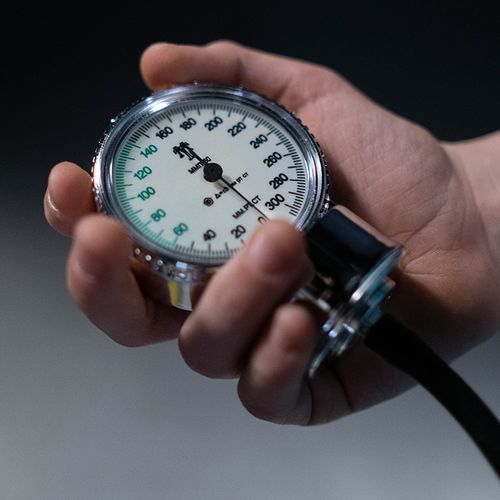Here's a disturbing bit of news. A recent study reports that 81% of blood pressure measurements taken by doctors and nurses are done improperly, resulting in numerous misdiagnoses. This means that many people are taking medications that they really don't need!
The American Heart Association has published guidelines recommending a particular methodology to follow when taking blood pressure measurements in a clinical setting, such as a doctor's office. In an earlier study, researchers evaluated pressure-taking techniques of 172 doctors and nurses and reported that none were following guidelines set by the American Heart Association this inspired Steven Burgess, MD, chief resident in family medicine at Texas Tech University Health Sciences Center, School of Medicine in Amarillo, to undertake a study to evaluate how these potentially erroneous measurements impact patient care.
What he learned is disconcerting. He said that the mistakes made when taking blood pressure readings were significant enough to change treatment recommendations for more than half the patients in the study! "My study showed that if someone initially has elevated blood pressure and we redo the reading in accordance with the guidelines, over 50% of the time the new 'correct' pressure puts the patient into a different category, which would cause treatment to be different," he said, noting that the pressure is virtually always lower when taken "correctly."
Mistakes Are Made
The most common blood pressure measurement mistake being made by health-care practitioners is to take a blood pressure reading immediately after a patient sits down. The guidelines say that patients should rest quietly for five minutes first. Why? Because physical ac tivity raises blood pressure, often by 10 mmHg or more.
In his 18-month study of 56 patients, Dr. Burgess found that when blood pressure is measured properly, the average patient's systolic (top number) reading is 15.7 mmHg lower than when the guidelines aren't being followed. For more than half (56.4%) of the patients, using the correct technique—compared with doing it the wrong way—meant that patients were fine without medication or changes to their current therapy.
Measure By Measure
Here are the American Heart Association's guidelines regarding the proper technique for measuring blood pressure…
- Patients should not exercise, drink caffeine or smoke for 30 minutes prior to measurement and should sit quietly for five minutes immediately before.
- While the measurement is being taken, the patient should be comfortably seated with his/her back supported (not perched on a stool or a table) and with feet flat on the floor. The patient's bare arm (the sleeve can be rolled up or, if it is too constricting, the shirt can be removed) should be supported at the level of his heart. In other words, the patient should lean his arm on an armrest or table or the doctor or nurse taking the reading should hold the patient's arm, not let it hang at the patient's side.
- The cuff must fit properly according to specific guidelines. For most people, a standard cuff will satisfy these guidelines, but large or obese patients or those who are unusually small require special-sized equipment.
For professional equipment (what's used by a health-care professional), the cuff should be placed one inch above the elbow. For digital monitors designed to be used at home, the cuff should be centered over the inside of the elbow.
- No talking-by either the patient or the practitioner. Speaking not only raises blood pressure, it also interferes with the practitioner's ability to focus on your pulse while taking a reading.
- At an initial visit, two readings should be taken and the results should be averaged. If the readings differ by more than 5 mmHg, a third reading should be taken and averaged with the other two. (Note: At subsequent visits, a single reading may be sufficient.)
Homework
Lots of people now monitor their blood pressure at home—so it's important that everyone recognizes that these readings must be done in the proper way. Be sure you are using the right type of equipment and following instructions. Also check to see whether your equipment gives you readings that match those taken in your doctor's office.
